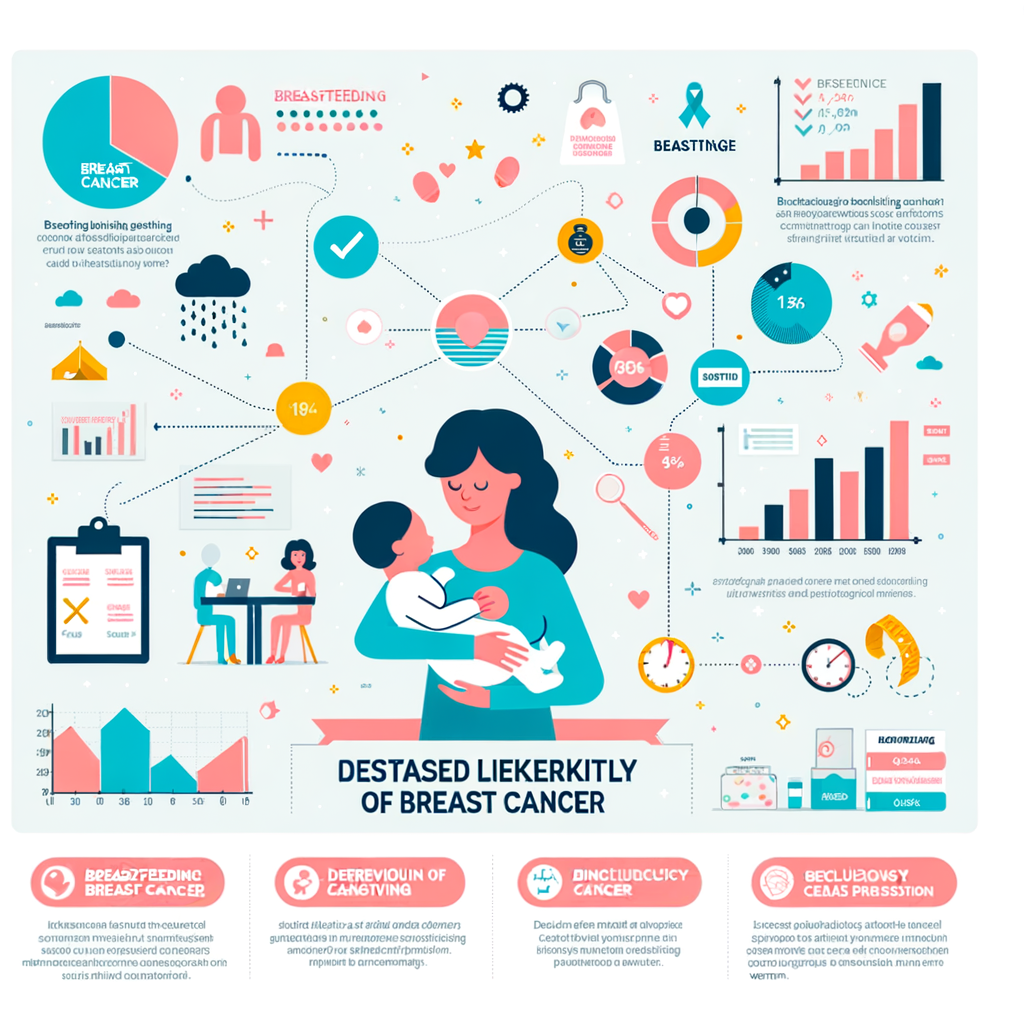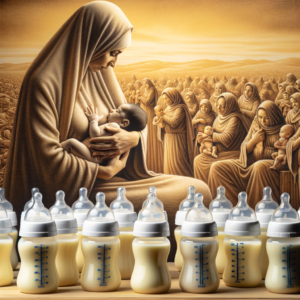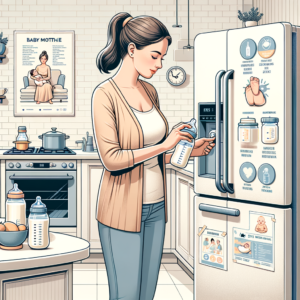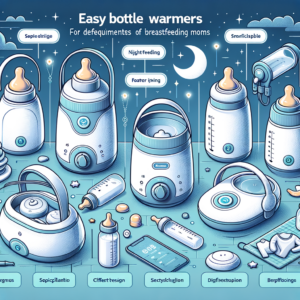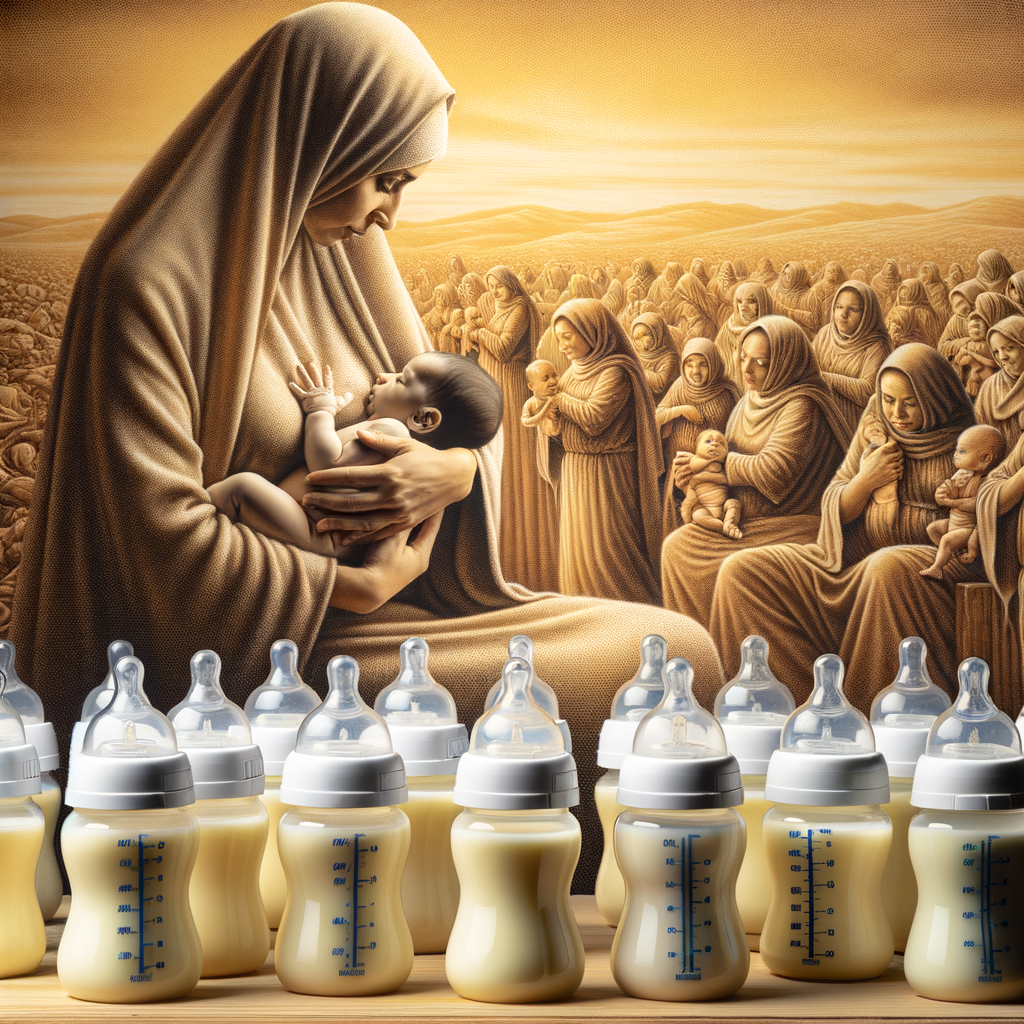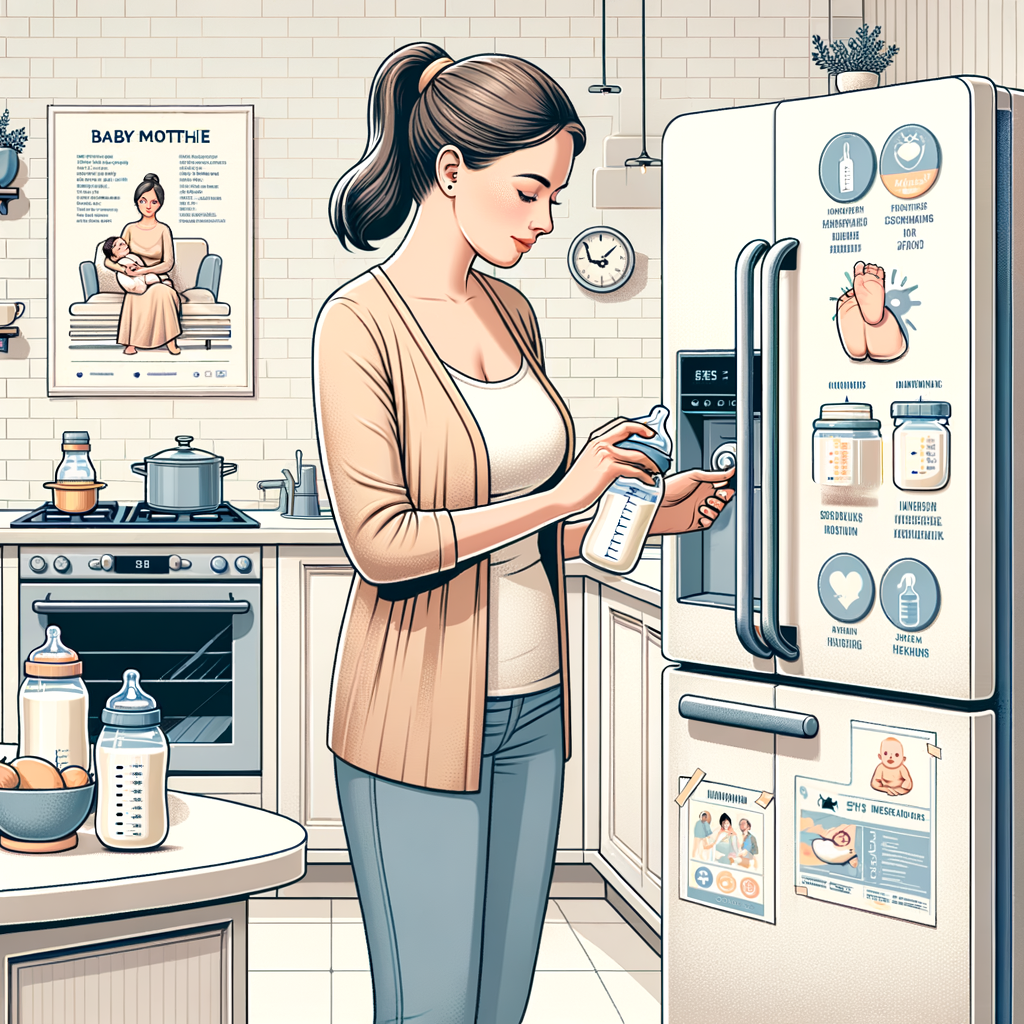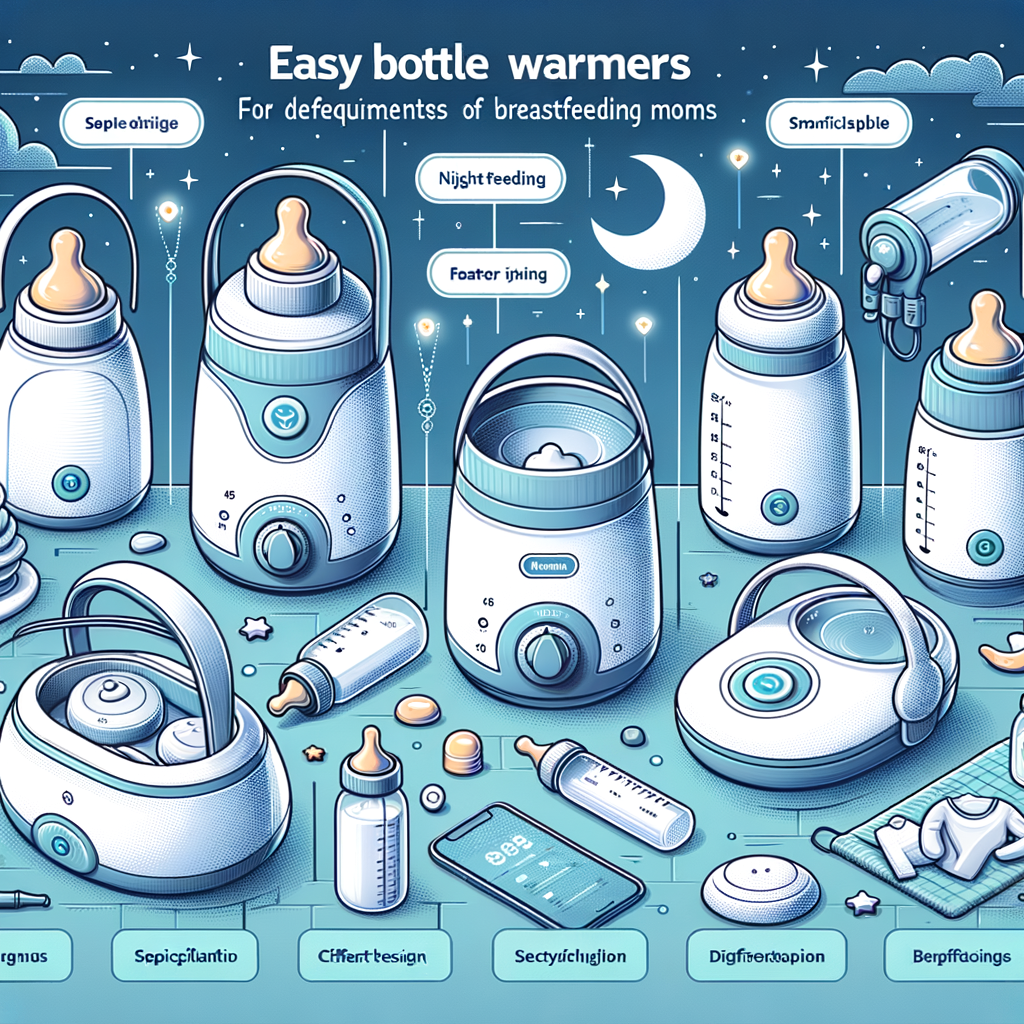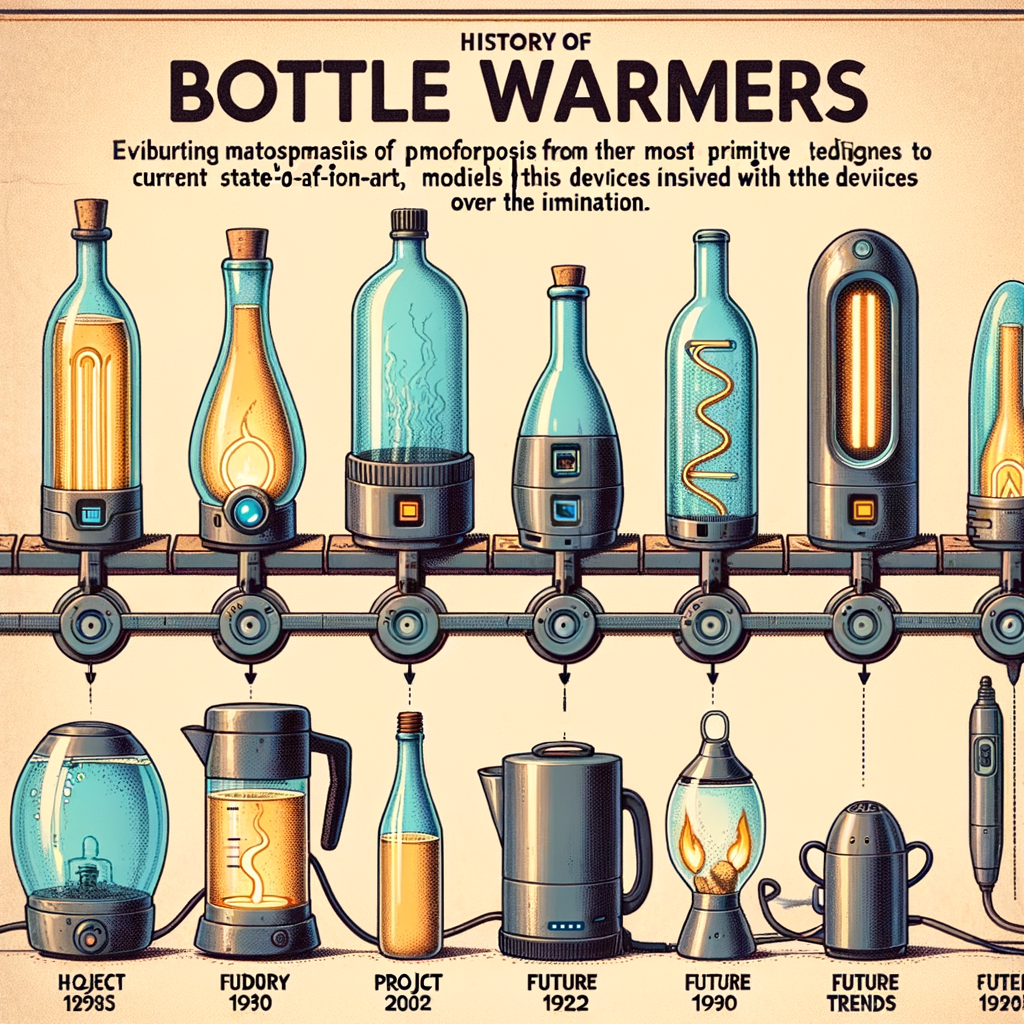
Introduction: Breastfeeding and Breast Cancer Risk
Welcome to our comprehensive guide on the relationship between breastfeeding and breast cancer risk. This is an important topic that affects many women worldwide. In this article, we will explore the science behind breastfeeding and its potential impact on breast cancer risk.
- Overview of the topic
Breastfeeding is a natural process where a mother feeds her baby with milk from her breasts. It’s not just a way to feed a baby, but it also has significant health benefits for both the mother and the child. One of these benefits, which we will focus on in this article, is the potential reduction in the risk of breast cancer.
Breast cancer, on the other hand, is a disease where malignant cells form in the tissues of the breast. It is the most common cancer among women worldwide. The risk of developing breast cancer can be influenced by several factors, including age, genetics, lifestyle, and certain reproductive factors. One of these reproductive factors that has been studied extensively is breastfeeding.
- Importance of understanding the link between breastfeeding and breast cancer
Understanding the link between breastfeeding and breast cancer is crucial for several reasons. Firstly, it can help women make informed decisions about breastfeeding and its potential health benefits. Secondly, it can contribute to the broader understanding of breast cancer prevention strategies.
Research has shown that women who breastfeed their babies have a lower risk of developing breast cancer. This is because breastfeeding can change a mother’s breast cells, making them more resistant to the disease. Additionally, breastfeeding often delays a woman’s menstrual periods, reducing her lifetime exposure to hormones like estrogen, which can promote breast cancer cell growth.
However, it’s important to note that breastfeeding is just one of many factors that can influence breast cancer risk. Other factors, such as age, family history of breast cancer, and lifestyle choices, also play a significant role. Therefore, while breastfeeding can potentially reduce the risk, it does not guarantee that a woman will not develop breast cancer.
In the following sections, we will delve deeper into the impact of breastfeeding on women’s health, the role of breastfeeding in breast cancer prevention, and the benefits of breastfeeding beyond cancer prevention. We will also share a case study that illustrates the link between breastfeeding and cancer risk.
The Impact of Breastfeeding on Women’s Health
When it comes to the health of both mother and baby, breastfeeding plays a crucial role. It not only nourishes the baby but also impacts the mother’s health in numerous ways. Let’s delve into the general health benefits of breastfeeding.
General Health Benefits of Breastfeeding
From improving the mother’s health to boosting the baby’s immune system, the advantages of breastfeeding are manifold. Here are a couple of key benefits:
- Improvement in Maternal Health
- Boosting the Immune System of the Baby
Breastfeeding is not just beneficial for the baby, but it also has significant health benefits for the mother. It helps the mother’s body recover from childbirth more quickly by stimulating the uterus to return to its pre-pregnancy size. It also reduces postpartum bleeding. Moreover, breastfeeding mothers are less likely to develop postpartum depression, thanks to the bonding and the release of oxytocin, a hormone that promotes relaxation and well-being.
Breast milk is packed with antibodies and other immune-boosting substances that help protect the baby from illnesses. It is like a baby’s first vaccine, providing a natural immunity against many diseases. Babies who are breastfed have lower risks of developing allergies, asthma, and infections like ear infections, respiratory illnesses, and diarrhea. They also have a lower risk of sudden infant death syndrome (SIDS).
These are just a few of the many health benefits of breastfeeding. It’s important to remember that every woman’s breastfeeding journey is unique and the decision to breastfeed is a personal one. However, understanding the impact of breastfeeding on women’s health can help mothers make informed decisions about their health and the health of their babies.
Reduction in Woman’s Risk of Breast Cancer
One of the most significant health benefits of breastfeeding for women is the reduction in the risk of breast cancer. Let’s delve into the statistical evidence and scientific explanations that support this claim.
- Statistical Evidence of Reduced Risk
- Scientific Explanation of How Breastfeeding Reduces Risk
Various studies have shown that women who breastfeed have a lower risk of developing breast cancer. According to the American Cancer Society, breastfeeding can lower breast cancer risk by about 20%. This percentage increases the longer a woman breastfeeds. For instance, a woman who breastfeeds for two years in her lifetime has about a 23% lower risk of breast cancer. This is a significant reduction, considering that breast cancer is the most common cancer among women worldwide.
Now, let’s understand the science behind this. When a woman is breastfeeding, her body undergoes several changes. Firstly, women tend to have fewer menstrual cycles when they’re breastfeeding, which means less exposure to estrogen. High levels of estrogen can increase the risk of certain types of breast cancer. Secondly, the process of breastfeeding makes breast cells more resistant to mutations that can lead to cancer. Lastly, breastfeeding also leads to the shedding of breast tissue, which can help remove cells with potential DNA damage.
In conclusion, breastfeeding is not just beneficial for the baby but also for the mother. It’s a natural and effective way to reduce the risk of breast cancer. So, let’s encourage and support breastfeeding for the health and well-being of women worldwide.
Breast Cancer Prevention: The Role of Breastfeeding
One of the ways to potentially reduce the risk of breast cancer is through breastfeeding. But before we delve into that, it’s important to first understand what breast cancer is, its types, and common risk factors.
Understanding Breast Cancer
Breast cancer is a disease that forms in the cells of the breasts. It is the second most common cancer in women, but it can also occur in men. Let’s take a closer look at the definition and types of breast cancer, and the common risk factors associated with it.
- Definition and types of breast cancer
- Invasive ductal carcinoma: This cancer starts in the milk ducts and spreads to the fatty tissue of the breast. It can also spread to other parts of the body.
- Invasive lobular carcinoma: This cancer starts in the glands that produce milk (lobules).
- Common risk factors
- Age and Gender: Women are much more likely than men to develop breast cancer. Also, as you get older, the risk of developing breast cancer increases.
- Family history: If you have a close relative who has had breast or ovarian cancer, you have a higher risk of developing breast cancer.
- Genetics: Certain genetic mutations, such as those in the BRCA1 and BRCA2 genes, greatly increase the risk of breast cancer.
- Personal history: If you’ve had breast cancer in one breast, you have an increased risk of developing cancer in the other breast.
Breast cancer begins when the cells in the breast begin to grow out of control. These cells usually form a tumor that can often be seen on an x-ray or felt as a lump. The tumor is malignant (cancer) if the cells can grow into (invade) surrounding tissues or spread (metastasize) to distant areas of the body.
There are several types of breast cancer, but the most common are:
While the exact cause of breast cancer remains unclear, there are certain risk factors that are linked to the disease. Some of the most common include:
Understanding breast cancer is the first step towards prevention. In the next section, we will explore how breastfeeding can play a role in preventing this disease.
How Breastfeeding Contributes to Prevention
When it comes to preventing breast cancer, breastfeeding plays a significant role. Let’s explore how this natural process can help protect women’s health.
- Changes in breast tissue during lactation
- Reduction in lifetime exposure to hormones like estrogen
During the process of breastfeeding, a woman’s breast tissue undergoes several changes. These changes are not just temporary but can have long-lasting effects on the breast tissue, making it more resistant to cancerous changes. When a woman breastfeeds, her breast cells are busy producing milk and this process can help to eliminate any cells that may have DNA damage. This is a natural way to reduce the risk of breast cancer.
Estrogen is a hormone that can promote the growth of breast cancer cells. Women who breastfeed have fewer menstrual cycles throughout their lives, which means less exposure to estrogen. This reduced exposure can help lower the risk of breast cancer. In fact, studies have shown that women who breastfeed for a total of one year or more have a slightly lower risk of breast cancer compared to those who do not.
In conclusion, breastfeeding is not just beneficial for the baby but also for the mother. It is a natural process that can help in the prevention of breast cancer. So, let’s promote and support breastfeeding for the health of our women and children.
Case Study: Breastfeeding and Cancer
Let’s delve into a real-life case study to better understand the relationship between breastfeeding and breast cancer. This case study involves a woman named Jane, who breastfed her children and later experienced breast cancer.
- Case study of a woman who breastfed and her experience with breast cancer
- Insights and key takeaways from the case study
Jane, a mother of three, breastfed each of her children for over a year. At the age of 50, she was diagnosed with breast cancer. Despite her healthy lifestyle and no family history of the disease, Jane was shocked by the diagnosis. She underwent treatment and is now a breast cancer survivor. Jane’s doctors informed her that her decision to breastfeed may have played a role in her successful battle against cancer. They explained that breastfeeding can lower the risk of premenopausal breast cancer.
From Jane’s experience, we can glean several key insights. Firstly, breastfeeding does not guarantee immunity from breast cancer. However, it can significantly reduce the risk, particularly for premenopausal breast cancer. Secondly, early detection and treatment are crucial in fighting breast cancer. Jane’s regular check-ups allowed for early diagnosis and treatment, which greatly improved her prognosis. Lastly, it’s important to remember that everyone’s experience with cancer is unique. While breastfeeding can lower the risk, other factors like genetics and lifestyle also play a significant role.
In conclusion, breastfeeding is a powerful tool in the fight against breast cancer. It’s not a foolproof shield, but it does provide a layer of protection. As we continue to explore and understand the complex relationship between breastfeeding and cancer, it’s clear that breastfeeding offers numerous health benefits for both mother and child.
Breastfeeding Benefits Beyond Cancer Prevention
While breastfeeding is widely recognized for its role in reducing breast cancer risk, it offers a plethora of other benefits that extend beyond cancer prevention. These advantages are not only beneficial for the baby but also for the mother. In this section, we will explore the physical benefits that breastfeeding provides to mothers.
Physical Benefits
Breastfeeding offers a wide range of physical benefits to mothers. Here are some of the most significant ones:
- Weight loss post-pregnancy: One of the most noticeable benefits of breastfeeding is post-pregnancy weight loss. Breastfeeding burns extra calories, helping mothers shed pregnancy weight faster. According to a study by the American Journal of Clinical Nutrition, breastfeeding mothers tend to lose more weight six months after giving birth compared to those who don’t breastfeed.
- Reduced risk of other diseases: Breastfeeding also plays a crucial role in reducing the risk of other diseases. It lowers the risk of heart disease, type 2 diabetes, and ovarian cancer. The American Heart Association states that breastfeeding for at least six months can significantly reduce a woman’s risk of heart disease and stroke.
These physical benefits of breastfeeding are substantial. They not only help mothers recover from pregnancy and childbirth faster but also contribute to their long-term health and well-being.
Emotional and Psychological Benefits
While the physical benefits of breastfeeding are well-documented, it’s important to also consider the emotional and psychological benefits. These benefits can be just as significant, if not more so, for both the mother and the baby. Let’s explore these benefits in more detail.
- Bonding with the baby
- Improved mental health
Breastfeeding is a special time for mothers to bond with their babies. The skin-to-skin contact during breastfeeding helps to create a strong emotional connection. This bond can provide a sense of security and comfort for the baby. According to a study, babies who are breastfed are more likely to have a secure attachment to their mothers. This bond can also help mothers feel more connected to their babies, which can enhance their overall well-being.
Breastfeeding can also have a positive impact on a mother’s mental health. Hormones released during breastfeeding, such as oxytocin and prolactin, can help to reduce stress and anxiety. These hormones can also promote feelings of relaxation and bonding. Moreover, the act of breastfeeding can provide a sense of accomplishment and satisfaction, which can boost a mother’s self-esteem and mood. In fact, research has shown that mothers who breastfeed are less likely to experience postpartum depression.
In conclusion, the emotional and psychological benefits of breastfeeding extend beyond the mother to the baby, fostering a strong bond and improving mental health. Therefore, it’s clear that breastfeeding offers benefits that go far beyond cancer prevention.
Conclusion: Breastfeeding, Motherhood, and Cancer Risk
In this article, we’ve explored the significant relationship between breastfeeding, motherhood, and the risk of breast cancer. Let’s summarize what we’ve learned and share some final thoughts.
- Summary of the article
- Final thoughts on the impact of breastfeeding on breast cancer risk
We began by understanding the link between breastfeeding and breast cancer risk. We learned that breastfeeding has a protective effect on women’s health, reducing the risk of breast cancer. We delved into the science behind this, explaining how breastfeeding changes the cells in the breast, making them more resistant to cancer.
We then looked at a case study that further emphasized the role of breastfeeding in cancer prevention. We also explored the additional benefits of breastfeeding beyond cancer prevention, such as strengthening the mother-child bond and boosting the baby’s immunity.
After reviewing all the information, it’s clear that breastfeeding plays a significant role in reducing the risk of breast cancer. This is not to say that breastfeeding alone can prevent breast cancer, but it’s one of the many factors that can contribute to a lower risk.
It’s important to remember that every woman’s situation is unique. While breastfeeding is beneficial, it may not be possible or the best choice for every mother. Therefore, it’s essential to consider other preventive measures as well, such as regular check-ups and a healthy lifestyle.
Finally, let’s not forget the many other benefits of breastfeeding, both for the mother and the baby. From strengthening the mother-child bond to boosting the baby’s immunity, breastfeeding is a gift that keeps on giving.
In conclusion, breastfeeding is a powerful tool in the fight against breast cancer. It’s a testament to the strength and resilience of motherhood. So, let’s continue to support and encourage all mothers, whether they choose to breastfeed or not, as they navigate their unique journey of motherhood.

